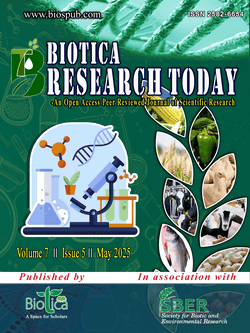
Seaweeds as Functional Foods: Nutritional Composition and Health Benefits
Bovas Joel*
Dr. M.G.R. Fisheries College & Research Institute, Thalainayeru, Tamil Nadu (614 712), India
Ahamed Rasid
Dr. M.G.R. Fisheries College & Research Institute, Thalainayeru, Tamil Nadu (614 712), India
S.J. Affin
Dr. M.G.R. Fisheries College & Research Institute, Thalainayeru, Tamil Nadu (614 712), India
DOI: NIL
Keywords: Kombu, Laverbread, Nori, Wakame
Abstract
Seaweeds found in seawater and the near-shore shallow zones are known to be a highly sustainable nutrient-rich potential raw material for many varied aspects from food, health care, agriculture and industrial use. Their high nutritional profile (abundant in essential fatty acids, amino acids, vitamins and minerals) has made them the “Medical Food of 21st Century” adored traditionally in Asian diets as Wakame, Nori, Kombu and Laverbread are now receiving international attention on their astounding health-imparting benefits.
Downloads
not found
Reference
Admassu, H., Abera, T., Abraha, B., Yang, R., Zhao, W., 2018. Proximate, mineral and amino acid composition of dried laver (Porphyra spp.) seaweed. Journal of Academia and Industrial Research 6(9), 149-154.
Anonymous, 2000. Seaweed’s nutritional value. Fisheries Information Newsletter, 95. Available at: https://www.spc.org.nc/coastfish/News/Fish_News/95/NIAR_9.htm. Accessed on: April 20, 2022.
Fleurence, J., 1999. Seaweed proteins: Biochemical, nutritional aspects and potential uses. Trends in Food Science & Technology 10(1), 25-28. DOI: https://doi.org/10.1016/S0924-2244(99)00015-1.
Kolb, N., Vallorani, L., Milanovic, N., Stocchi, V., 2004. Evaluation of marine algae Wakame (Undaria pinnatifida) and Kombu (Laminaria digitata japonica) as food supplements. Food Technology and Biotechnology 42(1), 57-61.
Marsham, S., Scott, G.W., Tobin, M.L., 2007. Comparison of nutrition chemistry of a range of temperate seaweed. Food Chemistry 100(4), 1331-1336. DOI: https://doi.org/10.1016/j.foodchem.2005.11.029.
